The Walter and Mary Ellen Rudin House (1959)
The Walter and Mary Ellen Rudin House (1959)
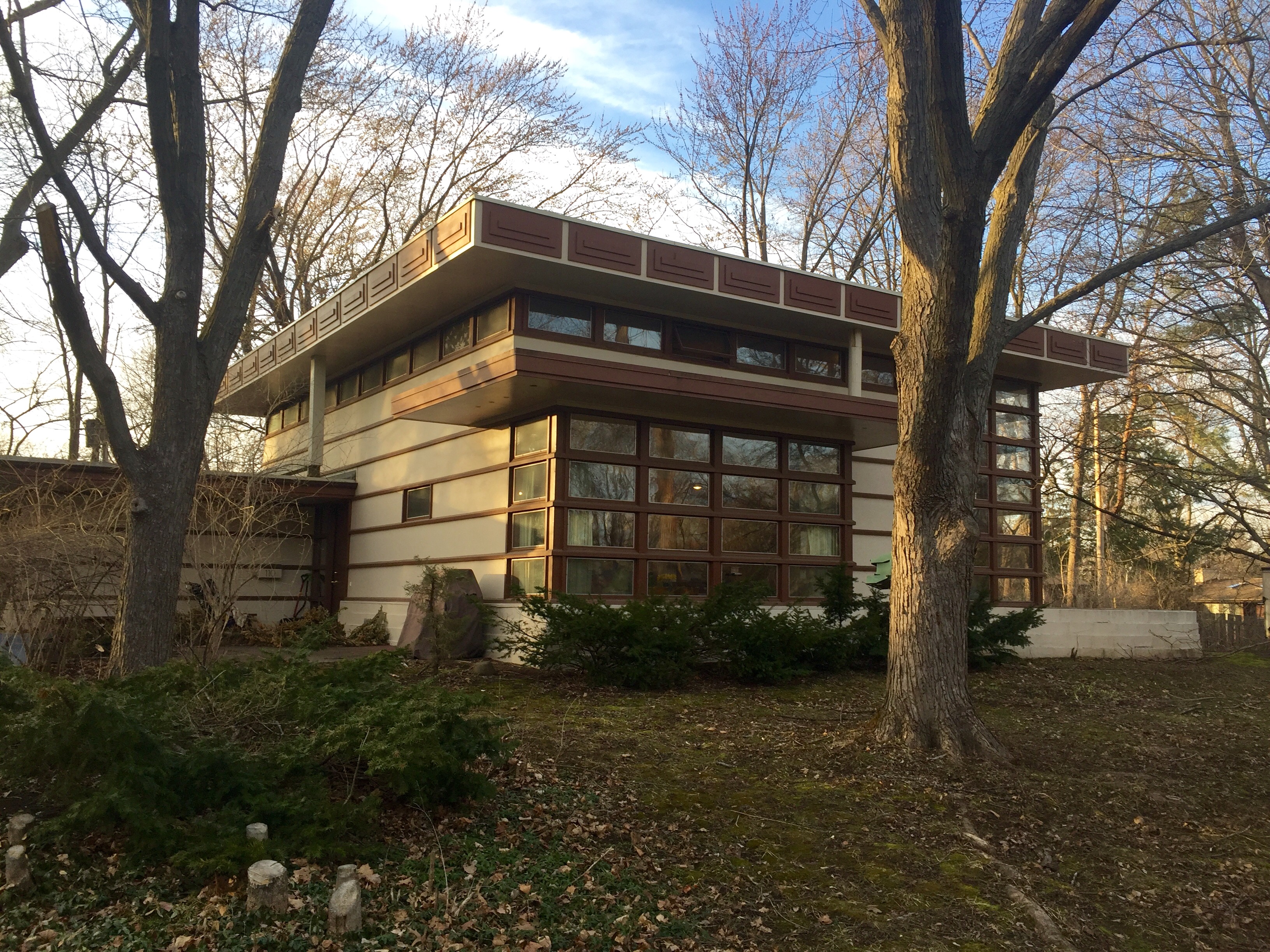
The Walter and Mary Ellen Rudin House was built in 1959 as a collaborative entry from Frank Lloyd Wright and contractor Marshall Erdman in the Madison “Parade of Homes.” Walter Rudin was a professor at the University of Wisconsin – Madison at the time that he purchased this house. The Rudin House is a domestic building located at 110 Marinette Trail in Madison, Wisconsin, in the historically preserved neighborhood of University Hills Farms (Wisconsin Historical Society). Wright’s design was an especially modern musing on prefabricated houses that featured a distinct “One room” open floor plan: a compromise in form between privacy and openness that the current owners have striven to balance. The Rudin House is also representative of one of Wright’s lifelong projects of making a well designed house for the masses, which didn’t quite reach the levels of success he had hoped for. This house was Wright’s second design in a series of prefabricated homes built by Marshall Erdman, as advertised in this brochure from 1958.
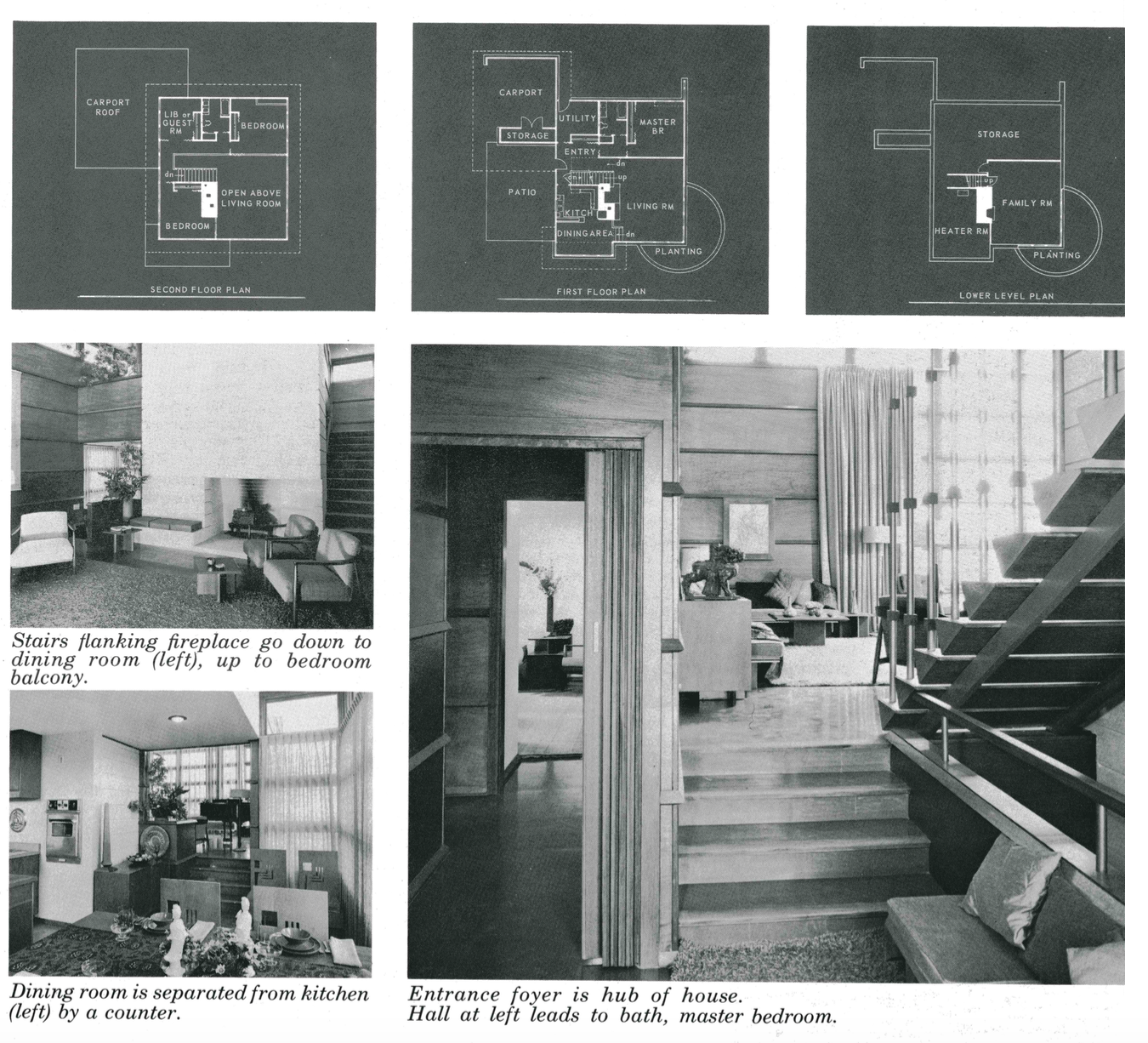
The Rudin house is a two story, prefabrication style home built as a large, modular cube. The main living space consists of a large two-story open atrium with two large vertical bands of windows. The center of the home has a large concrete white hearth that acts as the central fixture separating the kitchen from the living room. The rest of the home is split leveled. The first story includes the living room, a guest bedroom, a study, a dining room and kitchen as well as a large foyer. The study was later added as an extension to the home as seen in the image below with a different type of flooring material. The second floor includes two additional bedrooms, a restroom, and a den space. Outside of the den space includes a balcony looking down into the living room. The basement serves as a location for the heating and laundry rooms, as well as a large playroom.

The home was built in 1959 in the historic University Hills Farms district in Madison. It was designed as part of the prefabrication period late in Frank Lloyd Wright’s career as a well designed home for the middle class family. The roof of the home is flat; a characteristic of many Wright homes at the time and has a band of awning windows underneath, creating the appearance of a floating roof line. The house faces southeast on the lot with both a large front yard and backyard space. The backyard is of modest size and features a layer of trees adding some natural privacy to the home and its large window walls. During the winter time, when the trees are bare, there are long floor to ceiling curtains that can be pulled shut in order to maintain the sense of privacy. From the basement, a smaller garden space can be seen which was originally meant to have a Japanese influence, another style Wright borrowed from frequently in his career. The basement also has a band of windows making the space feel more like another story of the home rather than being underground.
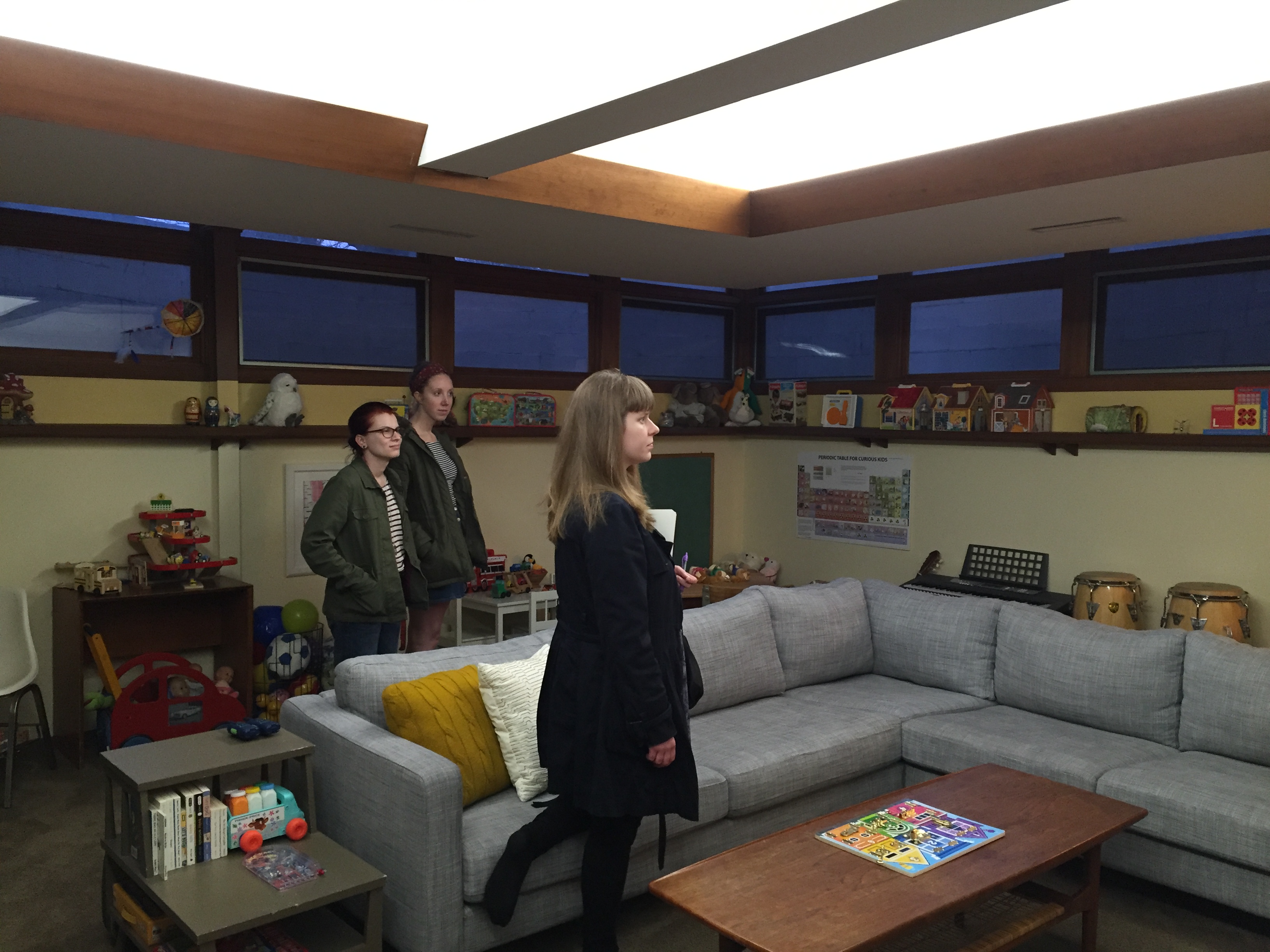
The design of the home features a one room style modular plan. The one room house layout provides a sense of continuity and unity in the design where air could flow through the entire home. The home does not have very many closed off spaces, as most of the interior walls that make up the rooms are divided by folding doors as seen in image the above image. The home was built to suit the needs of the average family with modifications allowed depending on the buyer, hence the modular style. This “plug and play” mentality used in prefabricated homes helped families individualize their home with still keeping costs down. The Rudins, as well as the current owners, made some modifications to Wright’s original design as well, such as opening and closing spaces as needed and adding the study addition in 1961.
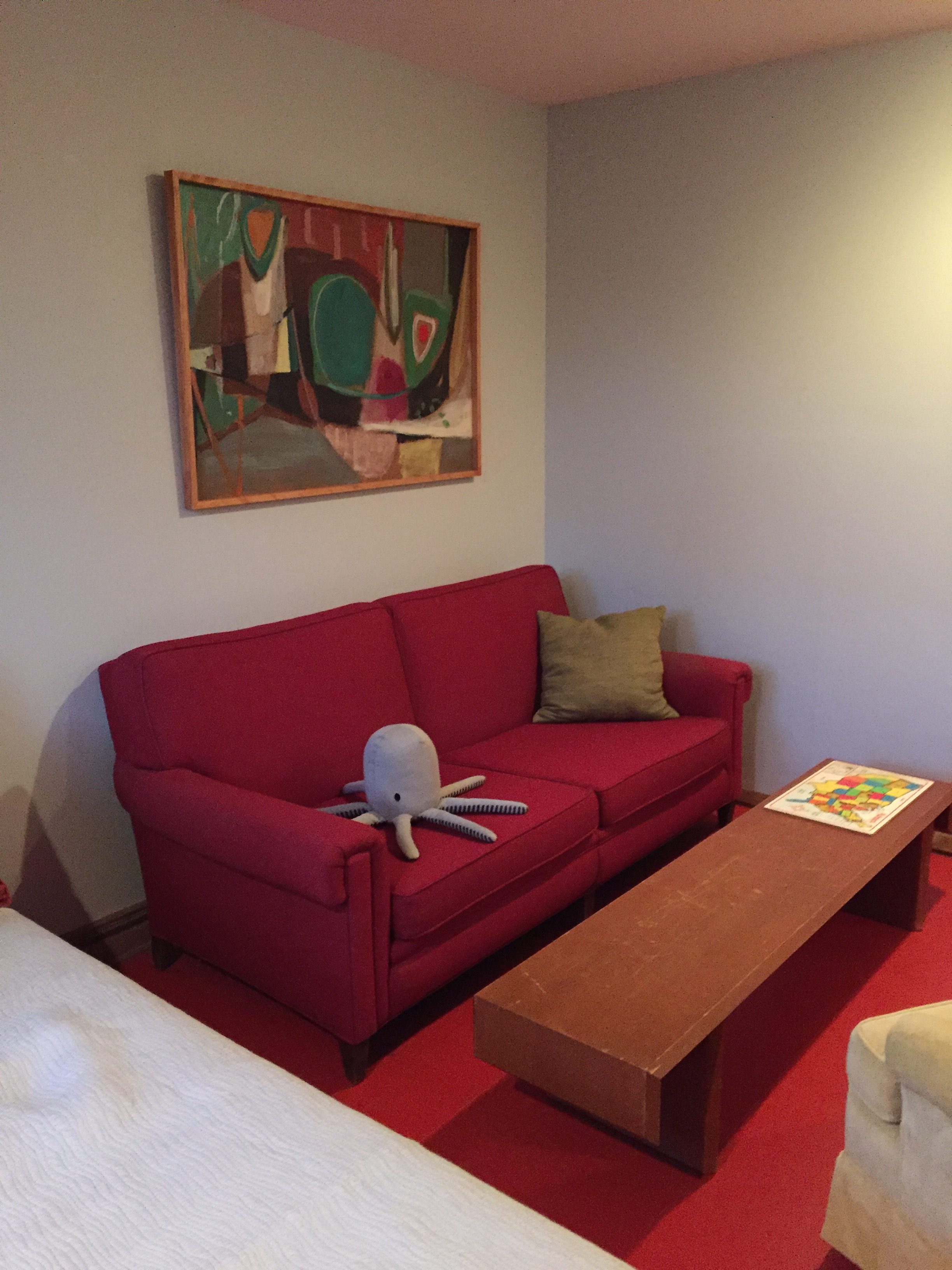
Frank Lloyd Wright prioritized family togetherness when designing his residential structures, emphasizing central hearths and large living rooms. What took this structure from being a Frank Lloyd Wright house to an actual home, though, were the modifications that the owners made in order to make the space their own. The original owners, Walter and Mary Ellen Rudin, were both professors at the University of Wisconsin – Madison and once they moved into the home, the need for a study space was immediately apparent. This was the reasoning behind the addition of the study space to the home two years after it was built. Although this space was not built by Wright, great thought was put into keeping it in tandem with the rest of the home and its furnishings, like the desk and benches that Wright designed and Erdman built. The current owners of the home told us an anecdote that Mary Ellen Rudin would always sit on the same spot on the couch in the home to do her teaching work and you can still see a dent from her head in the couch in the home today.
Making a Wright House into a Livable Home
The current owners of the Rudin House are the Betzen family, who moved into the home in 2013 along with their family. The Betzens have had to make several changes to the home in order to accommodate their young family, and add an element of privacy. Since the original design emphasized free flowing air, there was a opening on the interior wall of the home so that the same panel of windows could reach up from the first floor to the second. This allowed for good air-flow but not any privacy of sound in the master bedroom, so the Betzens decided to close the gap. Although they closed the gap, they left the space with a divide so the room still seems as though it has the originally designed gap. This balance between respecting Wright’s original one-room model and the need for privacy in a modern home has been a challenge for the Betzens as well as an opportunity for creativity. The smaller bedroom upstairs has an opening in the wall that looks out over the living room. The Betzens and their young daughter have installed a makeshift lever and pulley system with a basket and a piece of string, so that notes and other fun items can be passed up and down between the two stories.
Other challenges the couple have faced is replacing small items in need of repair that cannot be found in stores today, including the bathroom tiles in the upstairs bathroom which are cracking and falling off. The owners are trying to respect Wright’s original designs and vision at the same time as keeping the home practical and liveable, starting with their decision to replace the old tilework with similar new ones. The Betzens have also taken some of Wright’s original fixtures and repurposed them for a new part of the house. In the original design, there was a wooden shelving system used to separate the kitchen and dining spaces, which added some cabinetry storage but severely limited the counter space available as well as blocked the view from the kitchen to the dining room when their children would eat. The Betzens took this shelving wall and used it instead as a bookshelf and wall decor in the study room, right above the original Wright-designed desk.
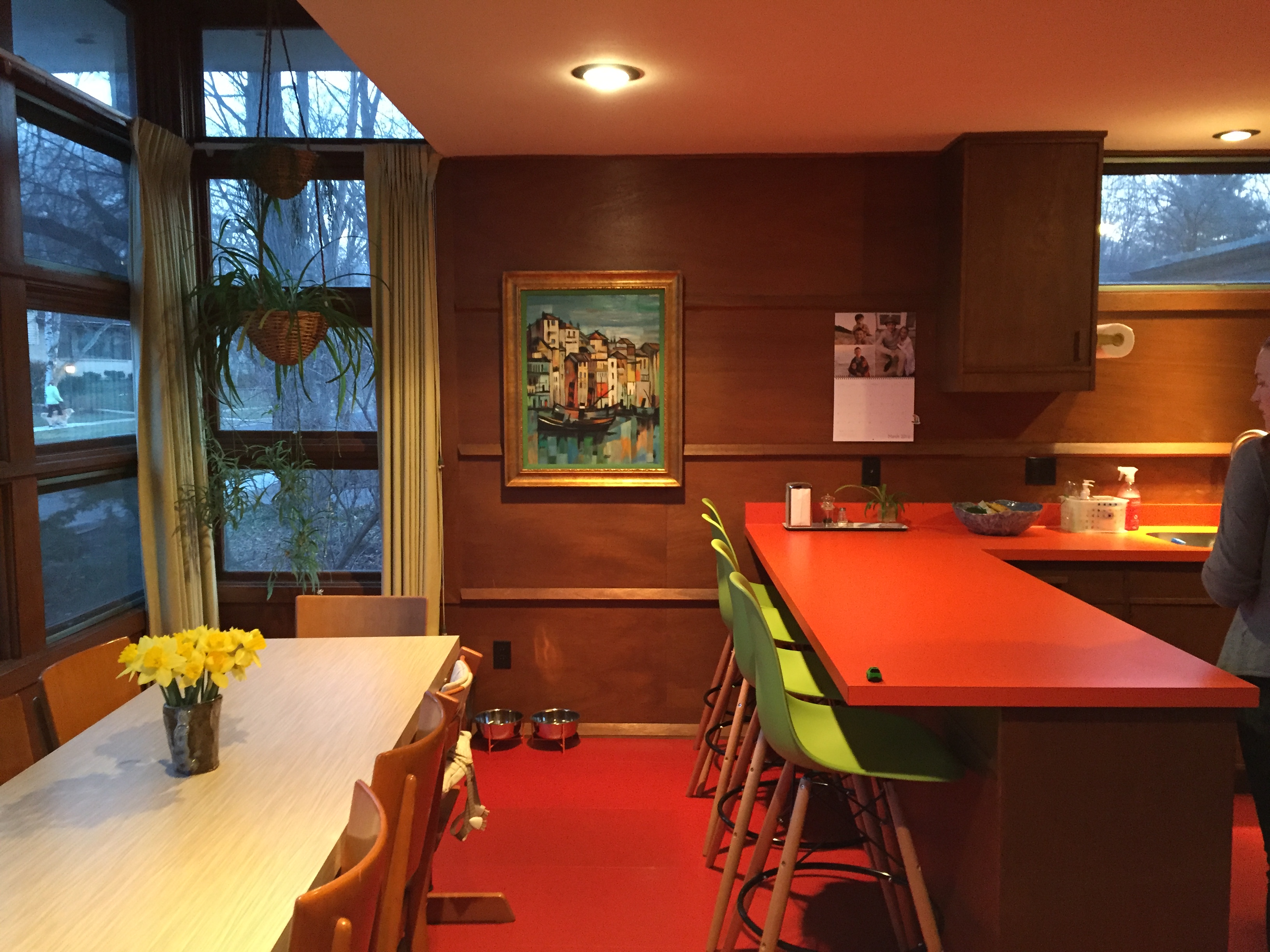
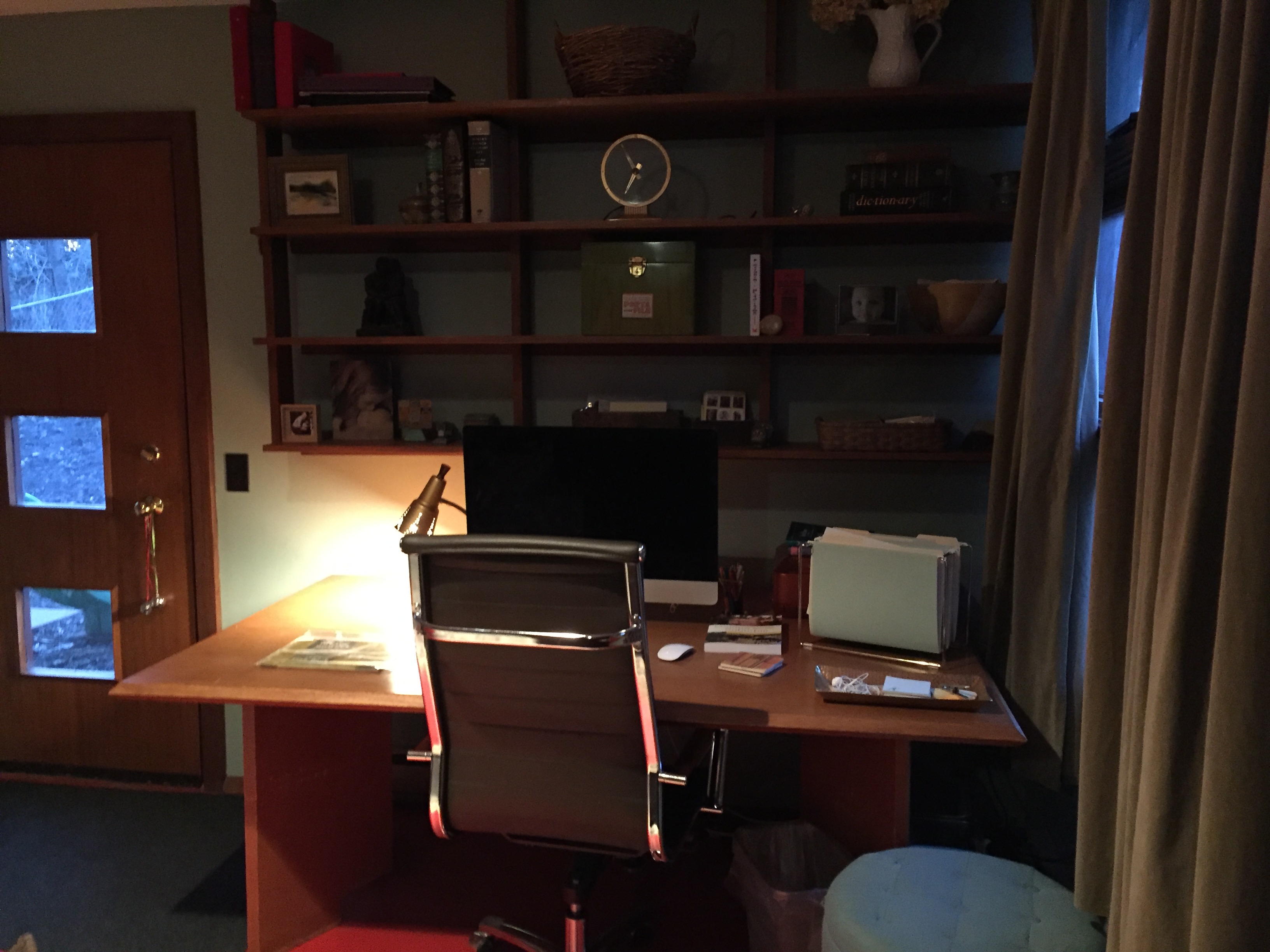
Another major change that was done was that the original flooring was changed to large red tiles. The original flooring had began to deteriorate and the current owners did not want to have deteriorating flooring around young children. Although they did not want to detract from the original flooring, they decided to replace it with large, bright red flooring tiles. They echoed the color and style of flooring used by Frank Lloyd Wright in many of his other buildings. In addition, they also replaced the counter top to be an orange laminate one to again go with the flooring color rather than the old color.
The Rudin House, which has now been standing for nearly 60 years, was chosen in November of 2015 to be preserved under the state register of historic places. Even after years of change and challenges in the structure, this building is still able to serve its original domestic function, especially since the revitalizing arrival of the most recent owners and their young family. Both the Rudins and the Betzens have achieved a remarkable balance between respecting Wright’s original vision and modifying the home in order to keep the house functional. Wright embarked on this project attempting to bring a well-designed home to mass Americans through prefabricated housing. His prefabs designed with Erdman did not catch on with the American public, but Wright’s efforts did lend to the city of Madison an important landmark representing an interesting phase in Wright’s late career.

